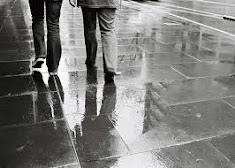Art & Commerce. Since the introduction of money, the uneasy alliance between the moneyed in search of glory and the artist in search of sponsorship in order to complete their vision has existed. What to sponsor, the immaculate and divine Sistine Chapel roof or the outlandish statuary on the Pont Alexandre 3 bridge in Paris. To the patron, which will bring me the most prestige and glory? To the artist, how am I going to pay the rent in this hovel I am living in? Although to be fair neither Michelangelo or Joseph Cassien-Bernard and Gaston Cousin (the designers of the bridge) were living in hovels at the time. But nevertheless, the search for patrons has been an ongoing necessity, and sometimes setbacks in this search, along with others, can be a spur to greater creativity.
As Beethoven’s encroaching deafness closed in, his compositions became more grandiose and magnificent. Steve Fossett kept pushing his adventurous expeditions until he disappeared on a flight and was never found. Chuck Close’s seizure and paralysis spurred him on to do major and larger works. There are a myriad examples of how adversity has spurred artists on to accelerate and expand their works and efforts. Nothing worthwhile comes easily and unlike legendary ad man George Lois, who believed there is nothing to be learned from setbacks, there is more to be learned from them than from untrammeled success.
As Beethoven’s encroaching deafness closed in, his compositions became more grandiose and magnificent. Steve Fossett kept pushing his adventurous expeditions until he disappeared on a flight and was never found. Chuck Close’s seizure and paralysis spurred him on to do major and larger works. There are a myriad examples of how adversity has spurred artists on to accelerate and expand their works and efforts. Nothing worthwhile comes easily and unlike legendary ad man George Lois, who believed there is nothing to be learned from setbacks, there is more to be learned from them than from untrammeled success.
– John Katz



















